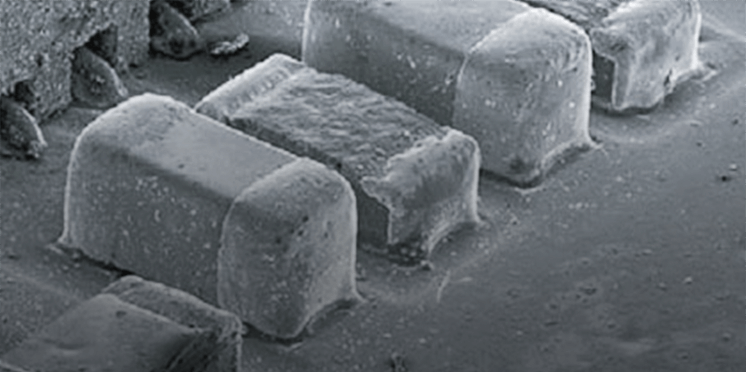反射電子
反射電子
backscattered electron
[目次:理論(電子の散乱/回折/結像)]
反射電子とは、入射電子が後方背面に反射(散乱)され、試料表面から飛び出す電子である。反射電子の強度は試料の原子番号が大きいほど大きい。反射電子のエネルギーは入射電子のエネルギーに近いので、二次電子のエネルギーより高い。また、反射電子は二次電子よりも深い所(表面から100nm以内)から飛び出すことができる。原子番号が大きいほど反射電子は多くなるので反射電子像から試料の組成の違いがわかる。また反射電子は鏡面反射方向に強い強度を持つので試料表面の凹凸もわかる。試料が結晶の場合、反射電子の強度は試料に対する入射電子線の方位に強く依存する(電子チャンネリング)ので、試料の反射電子像を撮ると、試料中の結晶方位の違いを示す像が得られる。
When incident electrons travel a specimen, a part of electrons is reflected (scattered) backward and emitted from the specimen surface. These emitted electrons are called "backscattered electron(s)." The intensity of the backscattered electrons is larger as the atomic number of the constituent atoms in the specimen is larger. The energy of the electrons is close to that of incident electrons, indicating that backscattered electrons possess higher energy than secondary electrons. Thus, the backscattered electrons are emitted from a deep region from the top surface (depth: 100 nm or less) compared to secondary electrons. A backscattered electron image provides the difference of the specimen composition and topographic shape. If the specimen is a crystal, the backscattered electron intensity largely depends on the orientation of the incident electron beam due to electron channeling. Thus, a backscattered electron image obtained from a crystalline specimen shows the difference of the crystal orientation in the specimen.
関連用語から探す
説明に「反射電子」が含まれている用語






